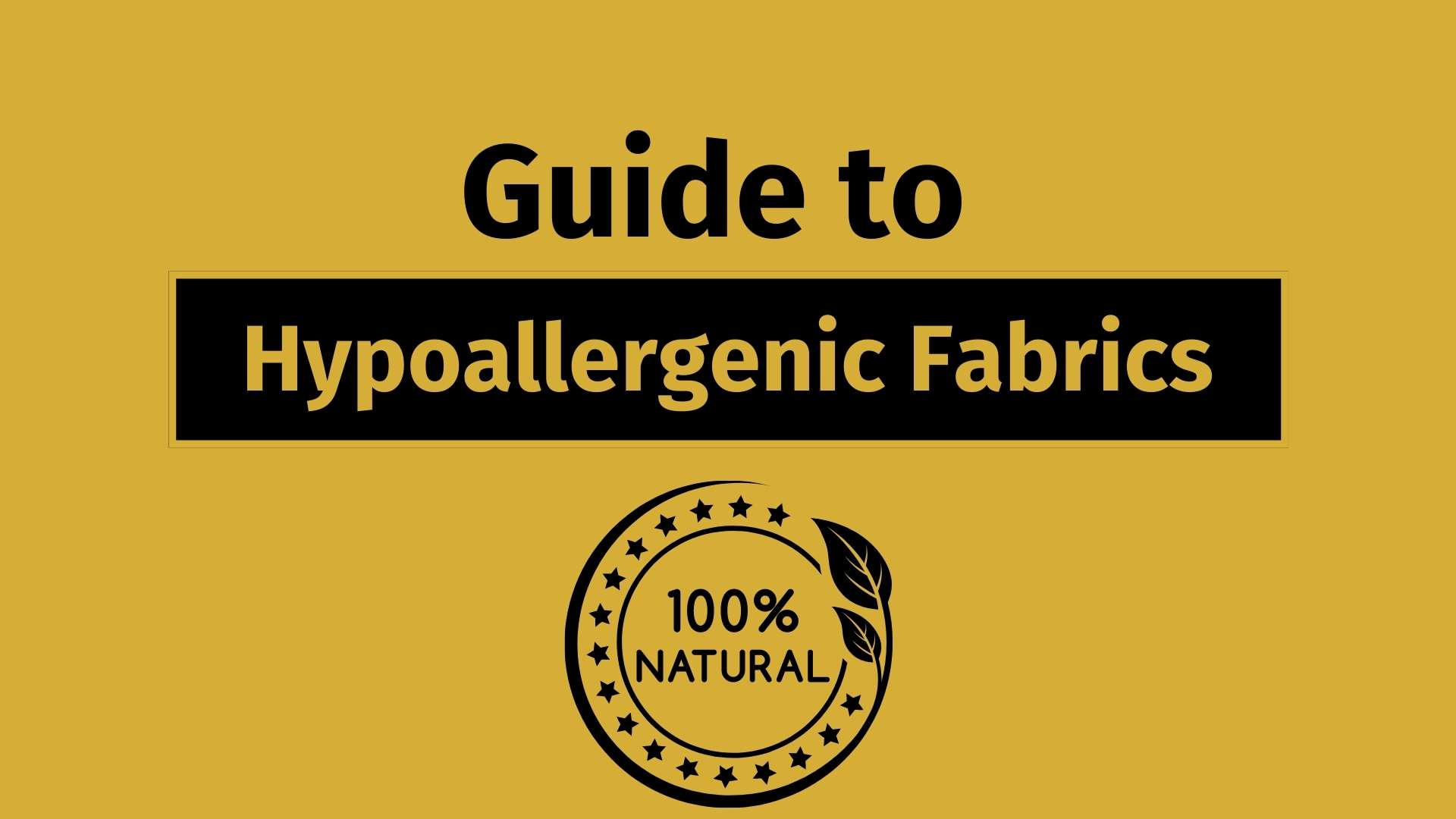Hypoallergenic is a term used for products that are "less likely to cause an allergic reaction." People with food, drug, insect, pollen, mold, or pet allergies should seek to buy products that are hypoallergenic in order avoid triggering allergic reactions. Hypoallergenic fabrics include silk, linen, hemp, cotton, cashmere, wool, leather, and bamboo.
This is: Guide to Hypoallergenic Fabrics.

Hypoallergenic fabrics come from natural fibers that are less likely to cause an allergic reaction. If you are sensitive to dust, mold, mites, or allergens, you would likely benefit from wearing garments made from hypoallergenic fabrics.
Continue reading to learn more about hypoallergenic fabrics, where they come from, their benefits, and more.
Contents:
What Does Hypoallergenic Mean?
Hypoallergenic is a term used for products that are "less likely to cause an allergic reaction." People with food, drug, insect, pollen, mold, or pet allergies should seek to buy products that are hypoallergenic in order avoid triggering allergic reactions.
"Hypo" means slightly or below normal, so the term hypoallergenic indicates a reduced risk of an allergic reaction when using products that are labelled or known to be hypoallergenic.
The term hypoallergenic was first introduced to the public in 1953 during an advertising campaign for cosmetics products. Since then, thanks mostly to the rise of the internet, consumers have become much more knowledgable and aware as to what kind of product they are buying and what the inputs are. This has led to an increased demand for hypoallergenic products across a number of industries.
Products that are hypoallergenic have become increasingly desirable in cosmetics, apparel, bedding, food and beverage, and a range of other industries.
Simply put, hypoallergenic means "anti-allergy."
Is Silk Hypoallergenic?
Yes, silk is a hypoallergenic fiber.
Silk is resistant to mold, mites, dust, odor, and other allergens. It is a natural fiber that is made by silkworms and uses no harmful chemicals during production.
Silk is known for being soft, dazzling, and luxurious, however, it has many benefits beyond that. Silk is used to make dresses, bridal wear, drapes, shirts, blouses, scarves, and more, but silk's hypoallergenic properties are especially beneficial when used to make pajamas, bedding, and pillowcases.
Getting a good nights sleep is supposed to be rejuvenating, refreshing, and comfortable. Silk bedding protects your from allergens that may be on your mattress that you do not want coming into contact with your skin. Silk's tight weave ensures that dust and mites cannot transfer from the mattress through to your bedding and skin.
Silk pajamas have body temperature regulating qualities and help to keep you cool and dry throughout the night, which is helping in avoiding skin irritation, especially for hot sleepers. Silk pajamas also protect you from mold, dust, mites, and other allergens that exist in the environment around us.
Silk pajamas are beautiful, comfortable, environmentally friendly, luxurious, and hypoallergenic!
Is Cotton Hypoallergenic?
Yes and no. There is conventional cotton, and then there is products that are specifically organic cotton.
Organic cotton is hypoallergenic and is used to make clothes, blankets, sheets, pajamas, and even mattresses. Organic cotton is free of chemicals, bleach, pesticides, and other dangerous allergens.
Organic cotton is great for babies as it is soft, hypoallergenic, and easily washable. Organic cotton will not irritate your skin and is great at repelling allergens like dust and mites.
Which Fabrics Are Hypoallergenic?
Examples of hypoallergenic fabrics are as follows:
- Silk
- Linen
- Hemp
- Cotton
- Cashmere
- Wool
- Leather
- Bamboo
These fabrics are all naturally made and do not use harmful chemicals during production. Silk for example is made from the cocoons naturally produced by silk worms. The cocoons are then boiled in a pot of hot water which allows the cocoon to unravel and the silk fibers to be gently extracted.
Learn more by reading How is Silk Made?
What Makes Fabrics Hypoallergenic?
The only fabrics and textiles that can be considered hypoallergenic are those that have been produced without using any noxious chemical substances. These chemical substances are often the catalyst for allergic reactions and irritation.
If a textile is considered hypoallergenic it means that the fibers used to produce the fabric was not made in conjunction with any chemicals whatsoever.
Using hypoallergenic textiles and fabrics for your clothing, pajamas, bedding, drapes, curtains, etc. will reduce your risk of experiencing an allergic reaction.
The Benefits of Hypoallergenic Fabrics
There are a range of benefits provided by hypoallergenic fabrics that have a positive effect not only on your allergies, but also on your overall health.
Benefits of hypoallergenic fabrics include:
- Naturally produced and environmentally friendly
- Gentle on sensitive skin or those prone to rashes
- Blocks allergens from transmitting from mattress to your skin
- Does not bring about allergies
- Repels mites
- Repels mold
- Is absorbent and doesn't make you feel sweaty when hot
- Repels dust
- Soft and lightweight
- Comfortable and feels great
- Breathable
Guide to Hypoallergenic Fabrics FAQ
What kind of fabric is hypoallergenic?
Silk, linen, hemp, cotton, cashmere, wool, leather, and bamboo are all examples of hypoallergenic fabrics.
What does hypoallergenic fabric mean?
Hypoallergenic is a term used for products that are "less likely to cause an allergic reaction." People with food, drug, insect, pollen, mold, or pet allergies should seek to buy products that are hypoallergenic in order avoid triggering allergic reactions.
Is polyester microfiber hypoallergenic?
Is cotton fabric hypoallergenic?
Yes and no. There is conventional cotton, and then there is products that are specifically organic cotton. Organic cotton is hypoallergenic and is used to make clothes, blankets, sheets, pajamas, and even mattresses. Organic cotton is free of chemicals, bleach, pesticides, and other dangerous allergens.

